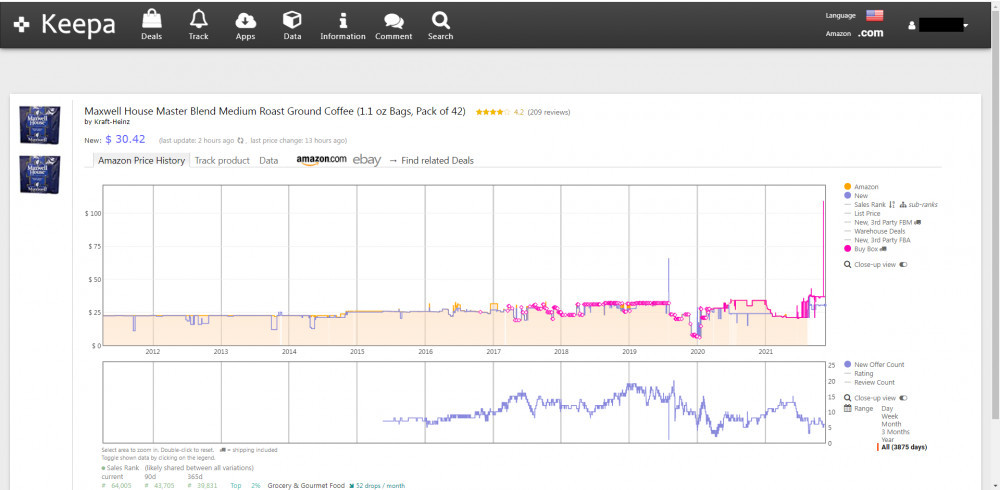I have to start by making a some very important distinctions. First of all, this article addresses where to find the best prices
(everyday low prices) without considering special promotions . If you want information on how to find unusually low prices (sales, coupons, seasonal events, etc.) then a lot of what I wrote in my post on Keurig coffee pod deals also applies for that. It covers finding those “once a year” (or maybe not as infrequent) type great prices.
Another distinction involves the issue of best prices (as in the best among all competing prices). That’s not necessarily the same as lowest price guarantees, as I will be explaining below.
I just want to be as clear as possible before proceeding. Using terms like “best prices” can be confusing, and not everyone who claims to show you the way to the best price does that in the truest sense.
Lowest Price Guarantees
Price Matching
I want to clarify what stores usually mean when they guarantee the lowest prices. Intuitively what I am inclined to think is that no other store has a lower price. However, that’s not usually what stores mean.
Typically, lowest price guarantees are about matching the lowest price available elsewhere. It’s a way to retain buyers that may have shopped elsewhere to save money. It’s as if they’re saying “don’t buy somewhere else just because they have a lower price, we can do that for you here.”
Price Matching Fine Print
There will always be fine print that specifies the conditions for products to be eligible for price matching. Few things beyond an apples to apples comparison (if any) qualify for price matching.
I’ll illustrate what I mean with the simplest example. Store A sells one pound of Brand X coffee for an “everyday low price” of ten dollars with free shipping. If Store B has a lowest price guarantee, and all else is equal, Store B will match the price of Store A.
“All else is equal” is a topic that I won’t be covering in this post, because the specifics vary too much among stores that offer lowest price guarantees. The best thing I can say is “read the fine print.”
One final note is that the buyer has to know that Store A has a lower price, and the buyer also has to bring it to the attention of Store B. Lowest Price Guarantees don’t mean that a store is going to be completely proactive and always try to have the lowest prices on everything. It also doesn’t mean that a store will match a lower price elsewhere on their own. The buyer has to request it.
Approaches to Comparing Prices
Identifying a Reference Price
There are many approaches to this, but the starting point usually doesn’t vary too much. In the example I will be providing, I will first check my reference to see the everyday low price range. Rarely will a price stay at a fixed price point, especially in e-commerce even when there is the slightest level of competition among sellers.
My reference will be Amazon itself (excluding all other sellers on Amazon, known as third party merchants). I like using Amazon as a reference because I have access to a lot of their data and also because they generally tend to consistently be among the most price competitive of sellers.
There are various Amazon price history tools, the one I use is Keepa. Below is the price history of the coffee I will use in my example (a case of 42 1.1 ounce Maxwell House bags). I will shortly be explaining why I chose this case of Maxwell House bags for the example.

This chart gives me the Amazon price history for slightly over a decade. On average, that price is around 25 dollars per case. I don’t know of any similar tool to track price history of sellers other than Amazon. As I had mentioned above, this isn’t a disadvantage to me since it turns out that Amazon tends to be among the sellers with the lowest prices.
Comparing With Other Stores’ Prices
There are many ways of doing this, the approach in my view depends on how much time and effort someone is willing to devote to comparing prices.
In continuing with a simple example, I will compare Amazon’s “everyday low price” with the price of a store that is among the top search results using keywords such as “best coffee prices.” In a prominent place on this store’s homepage you can see the following: “Guaranteed Lowest Internet Coffee Prices.”
Their regular price for the same case of Maxwell Coffee described previously is 45 dollars. Above I mentioned that I would only be considering “everyday low prices,” but I don’t think that truly is their regular price. Given that this is one of their bestsellers, I can only see their “discount price” of 29.99 as being their true everyday low price.
Their 29.99 is pretty close to Amazon’s price before they sold out recently, since lately Amazon had been selling it a few dollar above their historical average. Currently only third party merchants are in stock, and all of them have prices above 29.99. I’m just saying this to show that 29.99 is a pretty low price, because the store I am using in the example to compare to Amazon does not match third party merchant prices (that’s in the fine print).
Finding the Best Prices
This is not an exhaustive look at searching every possible store for the best price. It is an introductory look into the process. As I had mentioned above, how far someone extends the search for the best price will depend on how much time and effort that person is willing to dedicate to the search.
As a preview of the additional things that I will be writing about in the near future, I will continue with the example above and go a bit further. Even considering the things I mentioned earlier, I might not be 100% certain that I have found the best available price at 29.99.
Fortunately, there is no shortage of price comparison options these days. The following article mentions 25 of them, and there are many similar articles on the internet: 25 price comparison alternatives.
For coffee, and to an even greater extent for gourmet coffee, the process can be relatively simple in many cases. As we move farther away from the most popular brands and varieties, the potential number of stores that sell them drops significantly.

